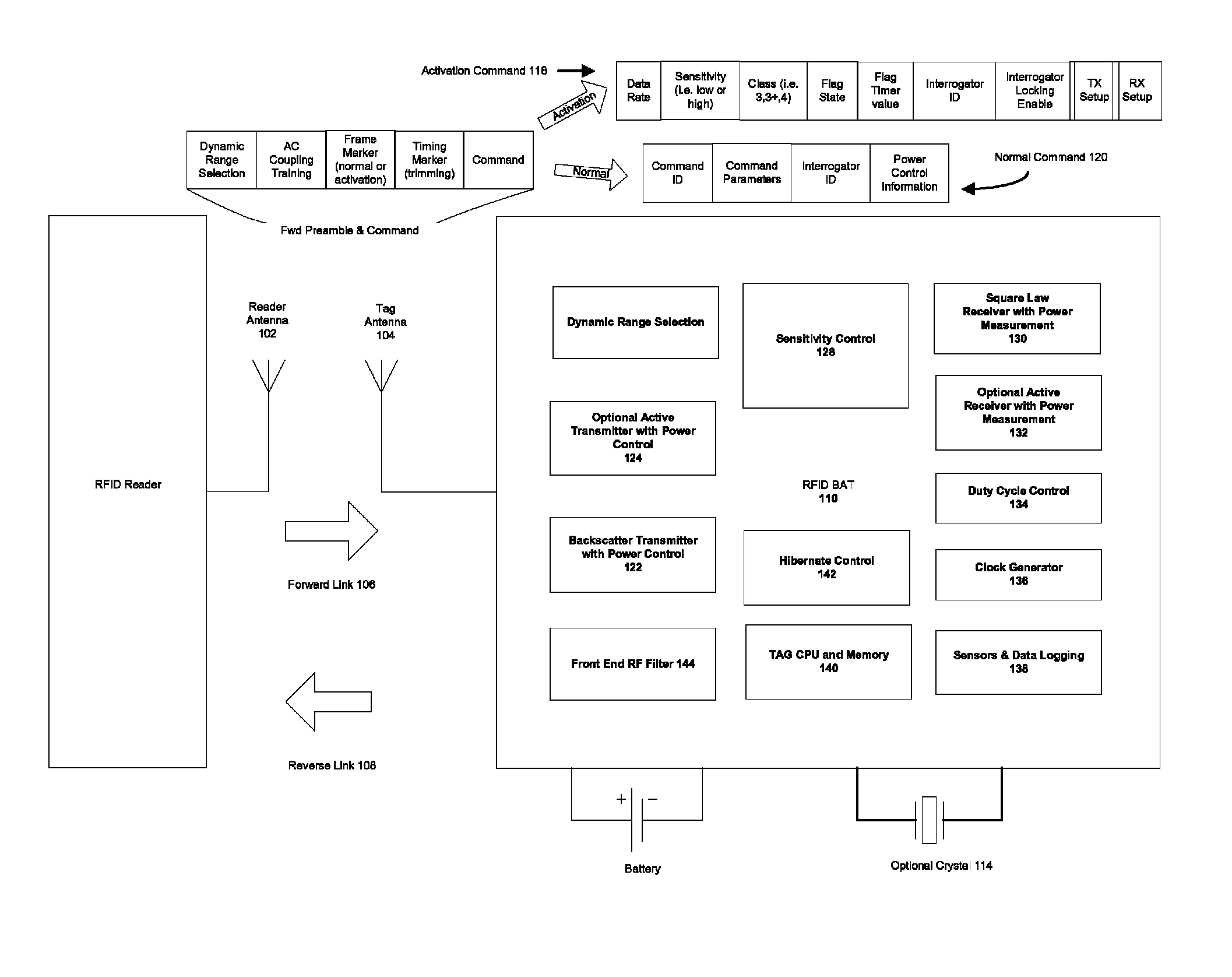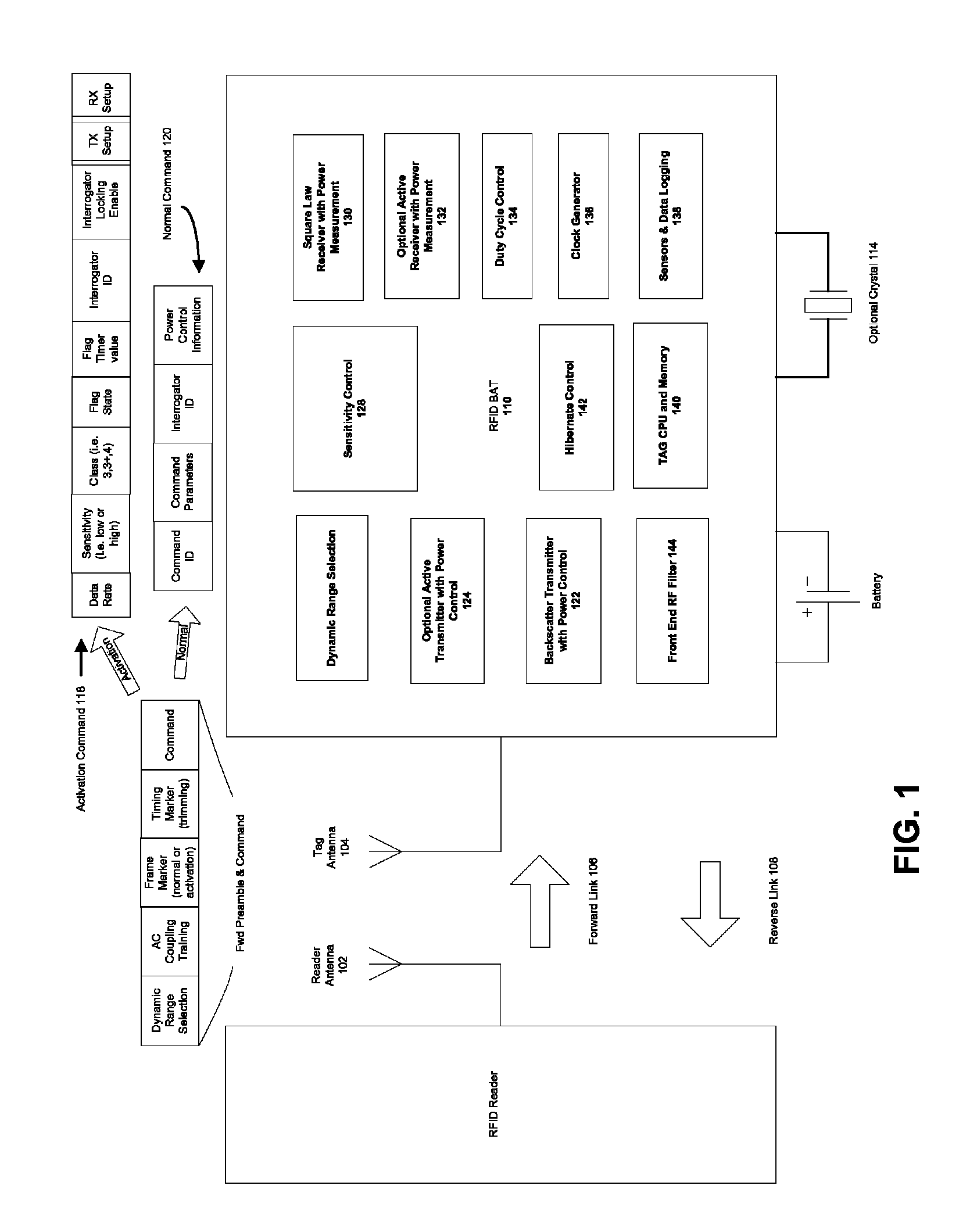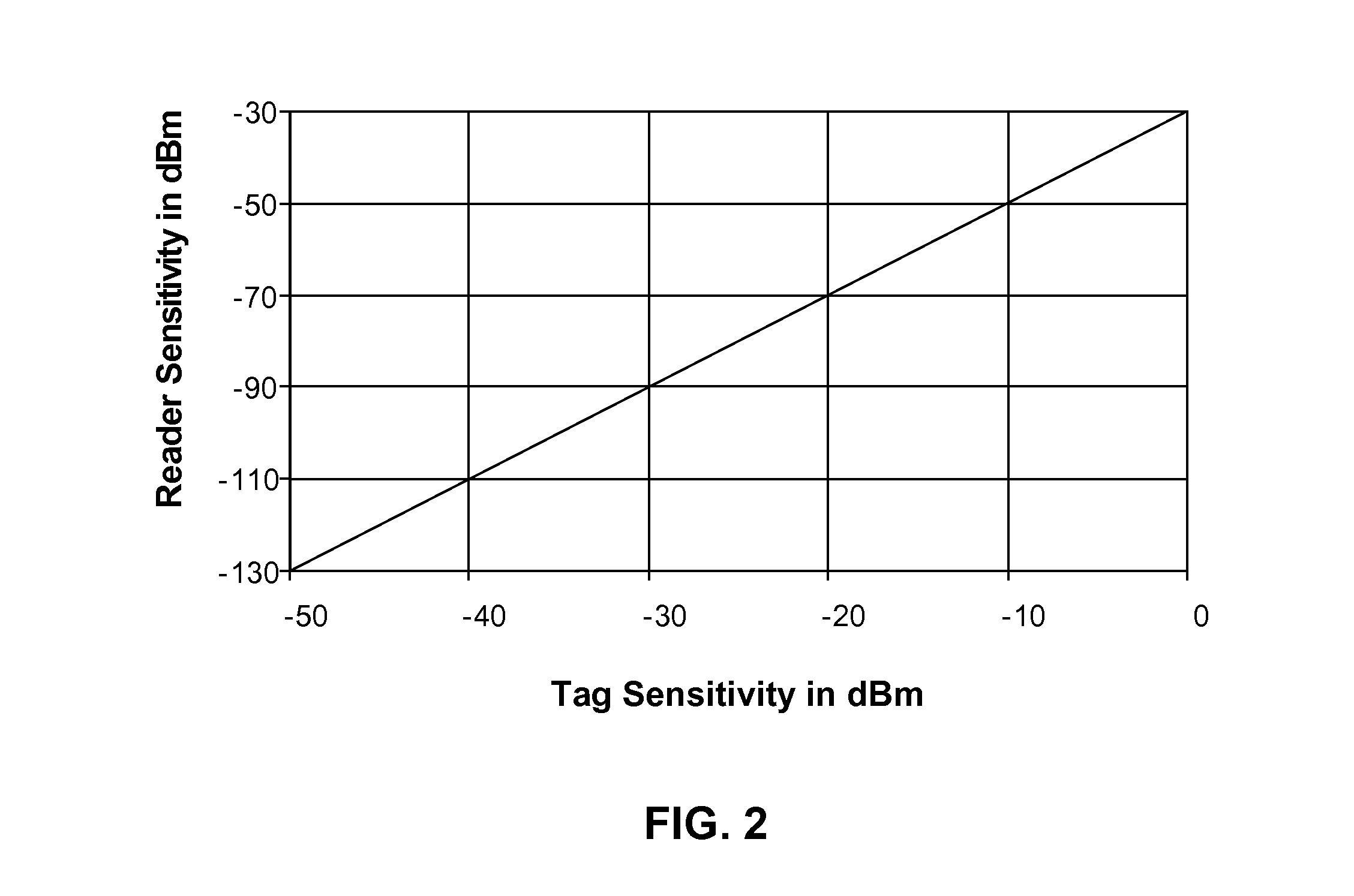Battery assisted RFID system RF power control and interference mitigation methods
a battery-assist rfid and power control technology, applied in the field of radio frequency identification, can solve the problems of insufficient fully, prone to interference, and insufficient interference resistance of the machine governing passive tag operation, and achieve the effect of reliable interference resistance operation and efficient operation of the tag
- Summary
- Abstract
- Description
- Claims
- Application Information
AI Technical Summary
Benefits of technology
Problems solved by technology
Method used
Image
Examples
case 1
[0326]1. Accidental Wake-Up Due to Deliberately Transmitted Data.
[0327]In certain embodiments of this invention, partial or entire correlation of the Activation and Frame Synchronization flag portion of the preamble is used to allow an early start to tag power-up sequencing, instead of waiting until the full Activation command is correctly received and decoded. This can reduce delay time before the tag is ready to begin normal mode operations. For example, it can take milliseconds to tens of milliseconds to power up a crystal oscillator and / or phase locked loop synthesizer for a Class 3 Plus or Class 4 tag, or to power up and lock a clock synthesizer for a microcontroller clock for a Class 3 tag. Accordingly, the PN sequence Activation Flag is designed so that this optional early start on power-up sequencing does not accidentally happen often enough to noticeably degrade battery life.
[0328]An analysis of this case makes use of the earlier development of the statistics under which t...
PUM
 Login to View More
Login to View More Abstract
Description
Claims
Application Information
 Login to View More
Login to View More - R&D
- Intellectual Property
- Life Sciences
- Materials
- Tech Scout
- Unparalleled Data Quality
- Higher Quality Content
- 60% Fewer Hallucinations
Browse by: Latest US Patents, China's latest patents, Technical Efficacy Thesaurus, Application Domain, Technology Topic, Popular Technical Reports.
© 2025 PatSnap. All rights reserved.Legal|Privacy policy|Modern Slavery Act Transparency Statement|Sitemap|About US| Contact US: help@patsnap.com



